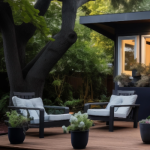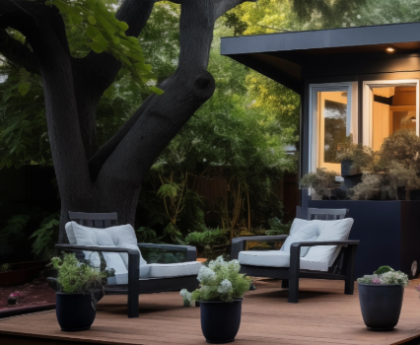
Manteca’s de facto affordable housing strategy — auxiliary dwelling units often referred to as granny flats — saw 21 new housing units started last year.
The ADUs feature rentals typically 20 to 30 percent less than a standard Manteca house that — depending on the era in which they were built — go from an average of 1,200 to 3,300 square feet. Manteca ADUs, by contrast, top out at 1,000 square feet although more space is allowed for handicapped units
An ADU also rents for significantly less than the average going rate for a Manteca apartment that was $1,659 in 2023.
There are a number of advantages for Manteca to find ways to encourage even more ADUs to be built in a given year.
*A possible affordable housing fee — of which the city completed a study for in September of 2022 — would have been significantly higher that the market could stomach in order to effectively build units in a timely manner. It could add $31,000 plus to the cost of the lowest priced new home sold in Manteca.
Clearly, elected leaders pursuing such a fee that high would be making at-market housing less affordable and probably significantly reduce the new housing inventory that would only exacerbate the shortage for affordable housing. That said, even lower fee options recommended at the time would not result in many units being built.
*There is no need of major infrastructure investment such as streets and sewer/water lines that are already in place.
Infill projects such as ADUs not only piggyback on existing amenities and infrastructure, but they also tend to be closer to shopping, dining, services, transit, and schools.
*Unlike subsidized mortgages the city once made through the redevelopment agency to help below-median income households buy homes, the affordability in relation to the market doesn’t disappear after deed restrictions of 15 to 25 years regarding resale limitations vanish. The smaller ADUs, by virtue of their size, stay at the lower end of the rental market.
Manteca has encouraged ADUs with lower growth fees and even has basic plan sets available.
There are several impact fees that are not collected in Manteca on auxiliary dwelling units 750 square feet or less in a bid to encourage more ADUs.
And if the ADU is 500 square feet or less the builder is also exempted by the State of California from paying school impact fees to further reduce development costs.
City rules are also lifted in terms of off-street parking spaces.
Couple that with the fact “off-property” infrastructure is already in place such as streets, sidewalks, sewer and water lines, storm drains, and even the backbone for PG&E utilities.
When you do, ADUs pencil out.
As such, they provide positive cash flow from the start for the property owners building the ADU that aren’t using them for family members such as elderly parents.
It is arguably the most effective strategy by far given ADU construction is market driven as opposed to current efforts to cobble together 196 units of affordable housing in conjunction with the homeless navigation center being pursued at 682 South Main Street.
Such affordable projects require patching together financing — when it is available — from state and federal grants, tax credits, and private sources and partnering with a non-profit.
They can have extremely long gestation periods such as the 48-unit Cottage Village Apartments — subsidized housing for low-income seniors — built at Cottage Avenue by Highway 99 that took almost a decade to go from initial planning to completion.
By contrast, even factoring in construction scheduling as well as supply delays, ADUs can easily go from construction to completion in less than a year.
There have been 60 ADUs built or started in the last four years in Manteca.
That includes six apiece in 2020 and 2021, 27 in 2022, and 21 in 2023,
While Manteca issued 21 permits for ADUs last year that rent below the city’s median for housing, no affordable housing projects per se were started.
There were 561 single family homes started in 2023 as well as a 136-unit apartment complex on Lathrop Road, west of Union Road.
The current market rates that newer apartment complexes are commanding will assure the new complex won’t meet affordable definitions.
And with the rare exception of a handful of infill single family homes in the last several years, no new house built in Manteca sells for less than $500,000.
An ADU is allowed to have a maximum square footage of 850 square feet in a studio-style layout, a maximum of 1,000 square feet for a one bedroom dwelling, or 1,200 square feet for a handicapped accessible home.
They cannot be higher than 16 feet.
No additional off-street parking is required for an ADU.
They also must have an independent exterior entrance.
There was a time when so-called “granny flats” — small secondary dwelling units accessed from paved alleys or behind existing homes — provided Manteca with a supply of affordable housing.
They lost popularity as tract development took over and many cities made then virtually impossible to build.
The current state movement that requires allowing garages conversions done to code, ADUs being built whether they are free-standing or added to and existing house, and allowing the conversion of single family homes into multiple family residences are all aimed at squeezing the most out of existing developed areas to help address California’s chronic housing shortage.
ADUs must be allowed in all zoning districts where residential uses are permitted. Local discretion for location of ADUs may be based only on the adequacy of water and sewer services, traffic circulation, and public safety considerations.
The dwelling units may be rented separately from the primary residence but may not be sold or otherwise conveyed separately from the primary residence.
To contact Dennis Wyatt, email [email protected]



